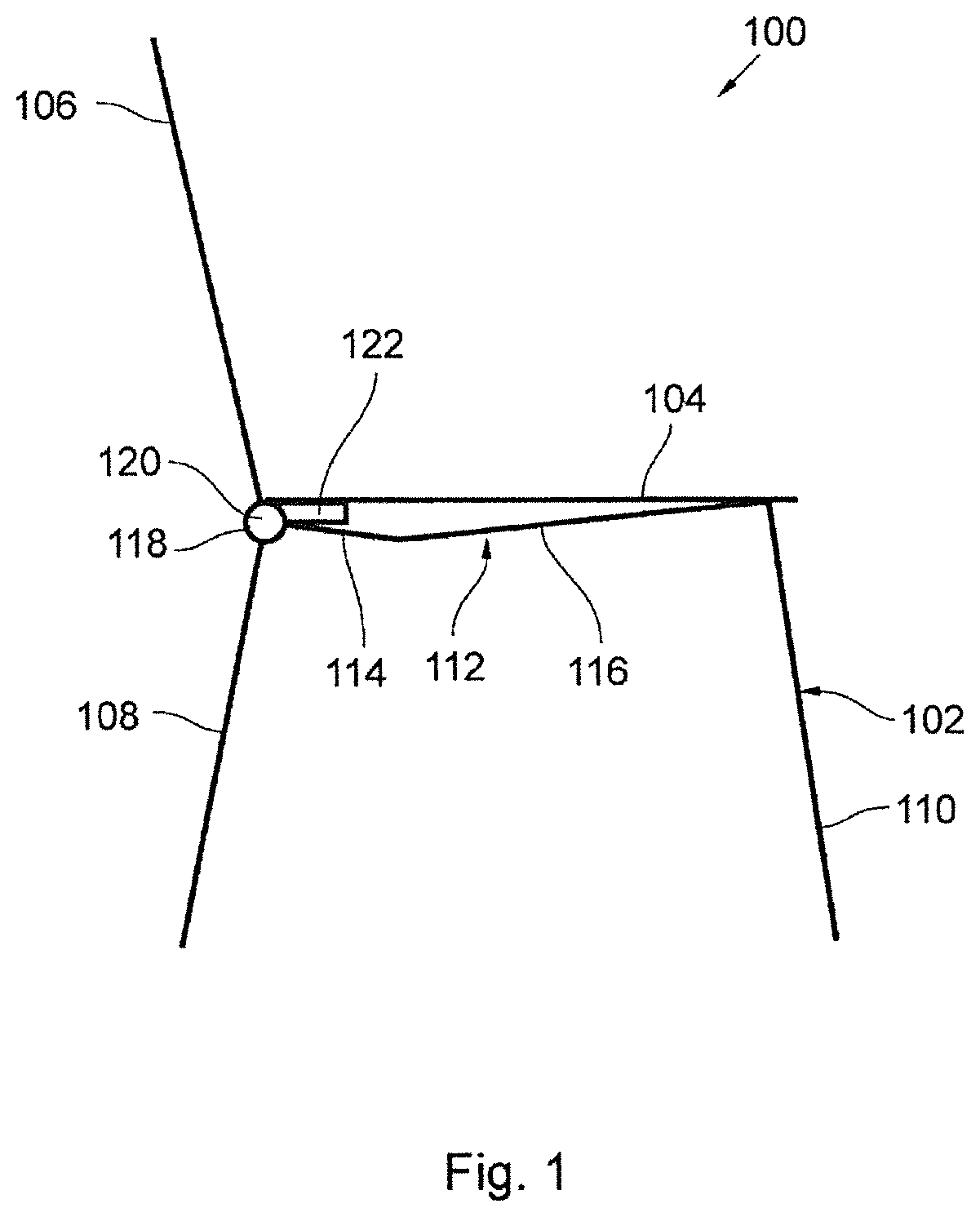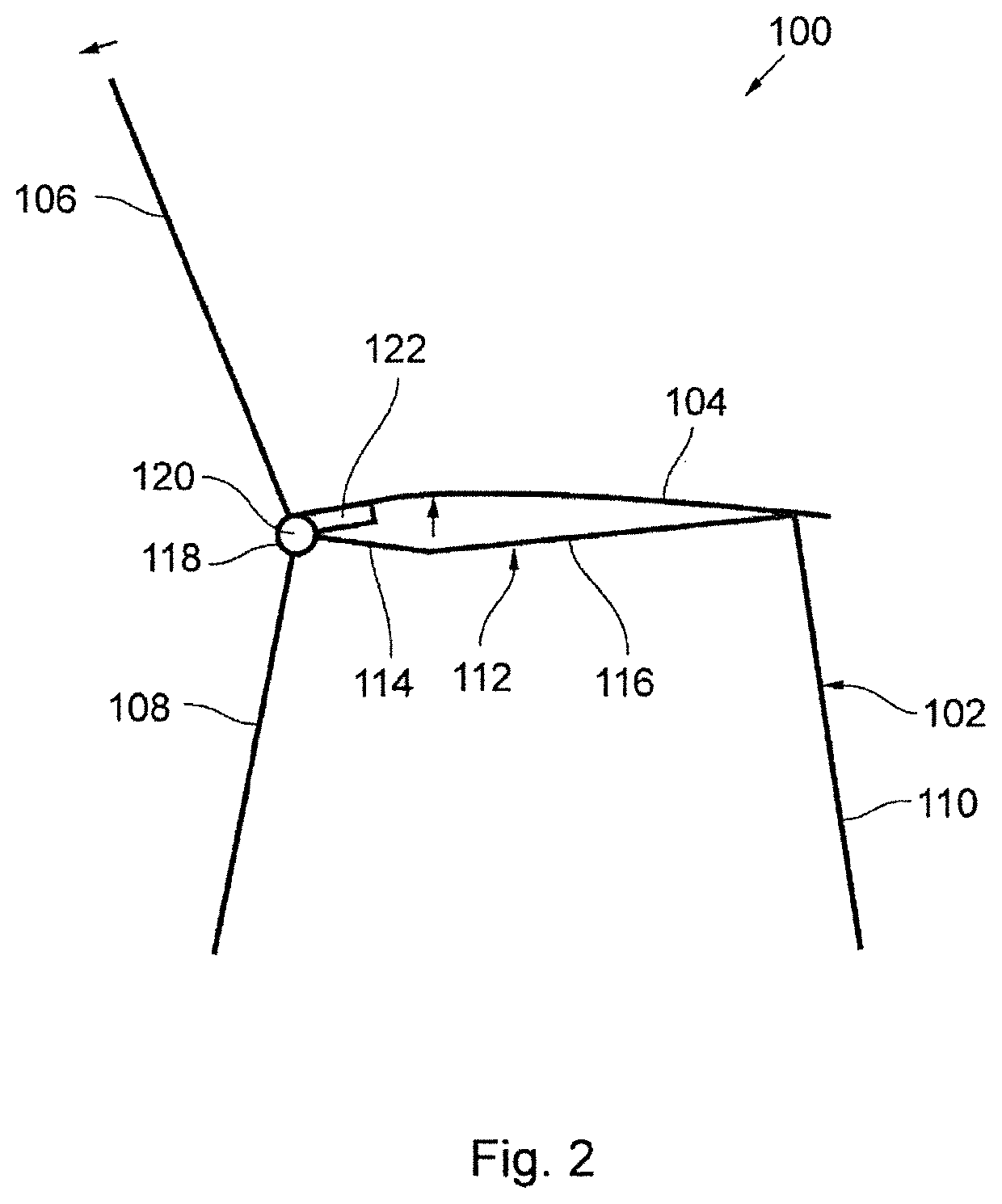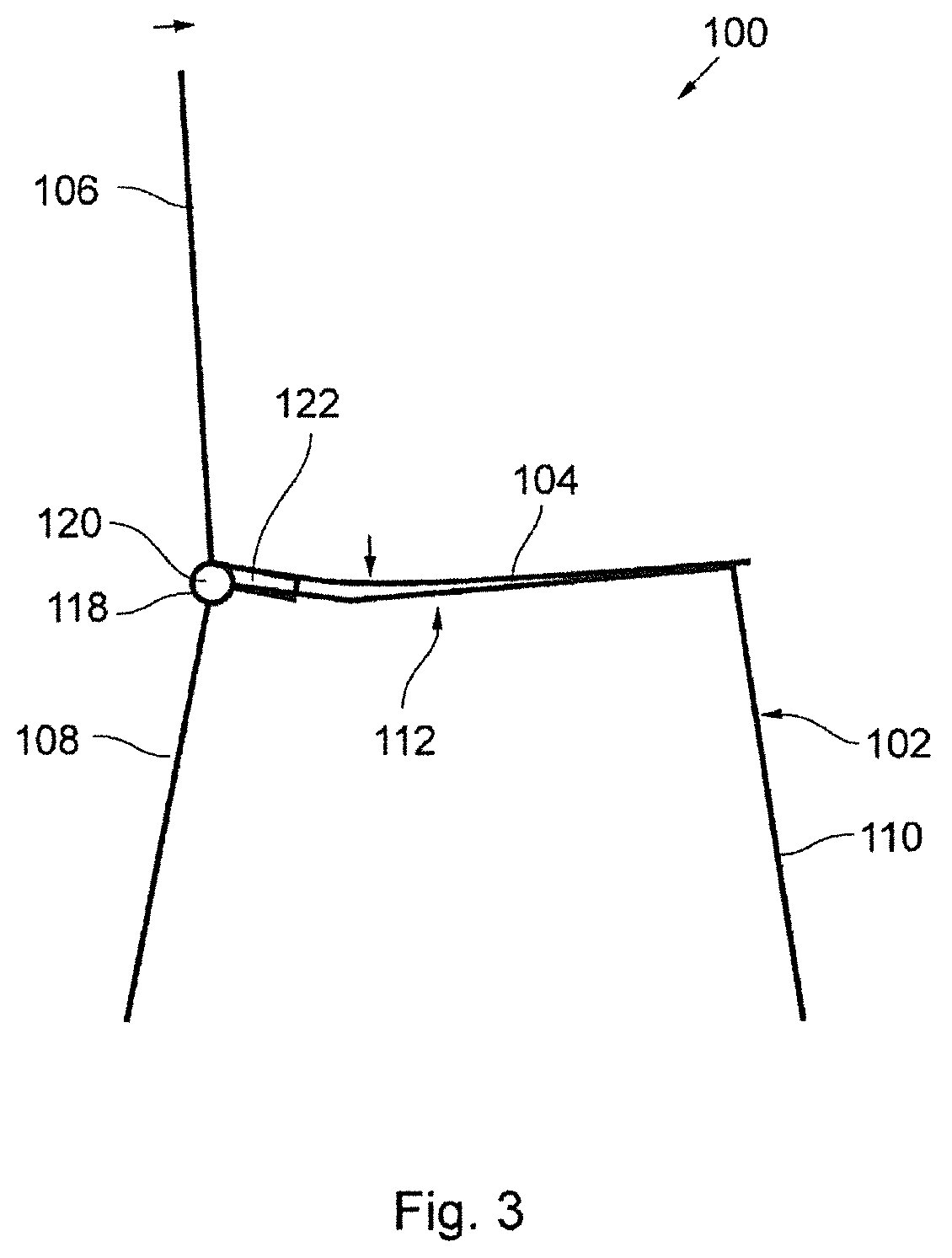Chair
a technology for chairs and backrests, applied in the field of chairs, can solve the problems of inability to move into a supported forward sitting position, inconvenient use, complex and costly solutions for connected chairs, etc., and achieve the effects of convenient use, low cost, and simple structur
- Summary
- Abstract
- Description
- Claims
- Application Information
AI Technical Summary
Benefits of technology
Problems solved by technology
Method used
Image
Examples
first embodiment
[0047]Chair 100 according of the first embodiment can be designed as a stackable chair or further developed into such a chair. In this respect, the details shown in FIGS. 1 to 3 should not be considered limiting for the present Invention to the effect that they stand in the way of such stackability. Furthermore, the mechanism according to the invention Is not associated solely with stackable chairs, but may also be used with other underframe constructions, e.g. for office chairs with a swivel frame.
[0048]The following FIGS. 4 to 15 show a second embodiment of chair 10 according to the invention. Like the chair 100 shown in FIGS. 1 to 3, chair 10 according to the second embodiment comprises an underframe 12, a seat section 14 and a seat back 16. As usual, seat section 14 is essentially horizontal and disposed on underframe 12 such that it slopes only slightly towards the rear, i.e. towards seat back 16.
[0049]Seat back 16 is inclined slightly backwards with respect to the vertical pos...
second embodiment
[0052]From the bottom end of seat back 16 a pair of levers extends underneath seat section 14 from the rear. In the present second embodiment of chair 10, these levers form the supporting element for supporting seat section 14. In the side views in FIGS. 4 to 6 only one lever 28 is visible, which will be referred to in the following description. Lever 28 (and its counterpart on the opposite side of chair 10) may for example be rigidly attached to transverse axis 26, which rotates together with seat back 16 inside bearing 24. Lever 28 therefore follows the pivot movement of seat back 16. If seat back 16 is tilted backward, the front end of lever 28 rises and exerts pressure on seat section 14 from below.
[0053]Seat section 14 is essentially divided into two parts in the crosswise direction, namely a longer front part 30 and a shorter rear part 32. Front part 30 is connected with rear part 32 by a film hinge 34 whose hinge axis lies approximately in the top side, i.e. in the actual sea...
PUM
 Login to View More
Login to View More Abstract
Description
Claims
Application Information
 Login to View More
Login to View More - R&D
- Intellectual Property
- Life Sciences
- Materials
- Tech Scout
- Unparalleled Data Quality
- Higher Quality Content
- 60% Fewer Hallucinations
Browse by: Latest US Patents, China's latest patents, Technical Efficacy Thesaurus, Application Domain, Technology Topic, Popular Technical Reports.
© 2025 PatSnap. All rights reserved.Legal|Privacy policy|Modern Slavery Act Transparency Statement|Sitemap|About US| Contact US: help@patsnap.com



